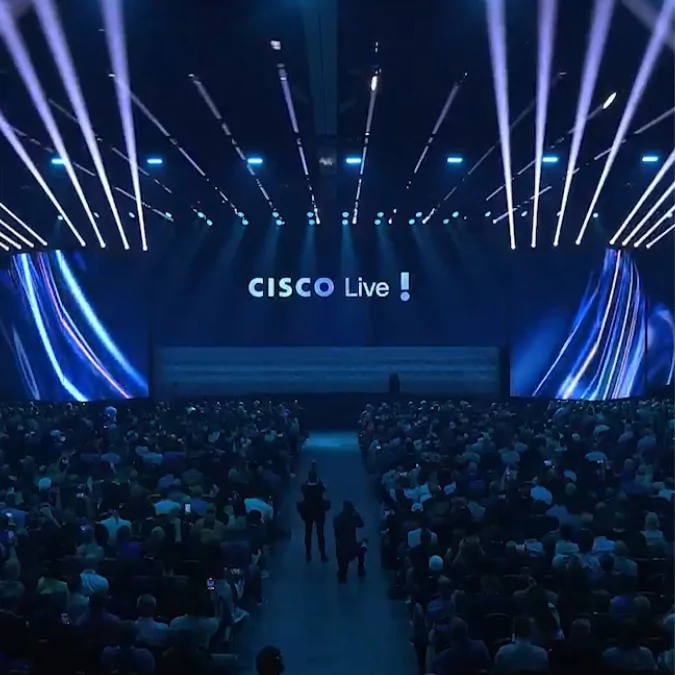When the Cloud Provider Falters: The Technical Fallout from the AWS and Azure Outages
22 Oct, 20257 minsTwo of the biggest names in cloud have hit serious turbulence in recent months. It is a remi...

Two of the biggest names in cloud have hit serious turbulence in recent months. It is a reminder that even the giants are not immune to failure. Both Amazon Web Services (AWS) and Microsoft Azure suffered disruptions that rippled across the digital world, affecting everything from enterprise apps to household services.
Let’s unpack what happened, why it matters and what these incidents tell us about the fragility of modern cloud infrastructure.
1. Root Causes and Failure Mechanisms
AWS: When the Control Plane Collapsed
On 20 October 2025, AWS’s US‑EAST‑1 region, one of the most heavily used in the world, suffered a major outage. The fault was traced to an internal subsystem that monitors the health of network load balancers within the EC2 service. The resulting failure triggered a surge of DNS resolution errors for the DynamoDB API, meaning applications simply could not locate or connect to their databases. Because US‑EAST‑1 underpins so many global workloads, the issue cascaded fast.
AWS restored the bulk of its services later the same day, though some offerings took hours to clear backlogs. The key lesson is that the failure was in the control plane, not the compute layer. The monitoring system itself went down, and with it everything that depended on it. Even the most redundant cloud environments can crumble if their dependencies are too tightly coupled.
Azure: When the Sea Went Dark and Then the Cloud Faltered
Azure has had a rough couple of months. On 6 September 2025, multiple subsea fibre‑optic cables running through the Red Sea near Jeddah were damaged. The incident impacted SEA‑ME‑WE 4, IMEWE and FALCON GCX, critical corridors that handle a large share of traffic between Asia, Europe and the Middle East. Connectivity was not completely lost; Microsoft’s status page noted that traffic continued to flow. However, traffic had to be rerouted through longer, lower‑capacity paths, which increased latency and packet loss for workloads dependent on those links. It was a stark reminder that the internet still runs on physical glass, and when that glass breaks, performance suffers everywhere.
Only a few weeks later, on 9 October 2025, Azure’s Front Door service (the company’s global CDN and load-balancing platform) experienced another incident. Microsoft’s monitoring showed a capacity loss of about 30 percent of Azure Front Door instances across Europe, the Middle East and Africa. Investigations revealed that some Kubernetes-hosted control-plane pods had crashed, pulling down a sizeable portion of Front Door’s edge nodes. Microsoft mitigated the issue by restarting the faulty pods and restored around 96–98 percent of affected capacity within hours.
Taken together, these incidents show that cloud fragility can stem from both physical damage and software orchestration failure: one beneath the sea and the other in the control plane.
2. Technical and Operational Impact
The Domino Effect of Dependencies
When AWS’s DNS resolution layer failed, it did not just stop users from reaching apps. It also knocked out internal monitoring, routing and recovery processes that relied on the same systems. Azure’s issues reinforced the same point. The Red Sea cuts demonstrated the limits of path redundancy, while the Front Door incident showed how container‑level orchestration faults can ripple through distributed control systems. Both highlight how hidden dependencies can turn a local problem into a global event.
The Risk of Over‑Concentration
AWS’s continued dependence on US‑EAST‑1 is not new, but it is increasingly risky. When one region acts as both a default and a dependency hub, it becomes a single point of systemic failure. Azure’s recent disruptions underline another kind of concentration risk: traffic routes and orchestration clusters. Even with theoretical redundancy, if workloads converge on shared physical or logical infrastructure, they can fail together.
The Challenge of Recovery
Recovery is never just “turning servers back on.” It means restoring dependencies, clearing queues, re‑establishing monitoring visibility and verifying data integrity. If your alerting tools live in the same environment that is failing, you are flying blind at the exact moment you need clarity.
3. Building Technical Resilience
- Map Your Dependencies: Document every critical service, API and route (not just in the data plane but also in the control plane). Knowing where your dependencies lie is the first step to protecting them.
- Diversify Network Paths: Do not rely on a single subsea corridor or backbone. Use multiple providers, regional Points of Presence or local ingress and egress points. True path diversity is essential.
- Separate Monitoring and Control Systems: Host monitoring and alerting outside your main cloud provider to maintain visibility during provider‑level outages. External synthetic probes and independent checks will still detect issues when your own tools cannot.
- Train for Failure: Plan for outages, but also practise them. Include control‑plane and network‑path failures in regular drills. Chaos engineering remains one of the most effective ways to prove your failover strategy actually works.
4. What It Means for Engineers
The recent AWS and Azure incidents make one thing clear: resilience is not just uptime; it is architecture. It is the difference between “we are waiting for Azure to recover” and “we failed over seamlessly without a user noticing.” Every engineer needs to understand how the physical and virtual worlds intersect — from DNS and routing to fibre and cable paths. The cloud might be abstract, but the risks are very real.
Final Thoughts
These outages were not anomalies; they were warnings. The cloud may feel infinite, but it is still bound by physics, routing tables and human error. For infrastructure teams, the goal is simple: build systems that expect disruption, detect it quickly and recover intelligently. In the era of global-scale computing, resilience is not a luxury; it is the foundation everything else depends on.
Looking to power your future? Talk to us.
If you’re seeking the best Data Centre Engineers on the global market to help pioneer growth for your business, get in touch with our AI Data Centre Team today, and we will connect you with the talent you need to meet your recruitment needs.
Alternatively, if you’re looking for your next career opportunity with the latest network engineer jobs, take a look at our current vacancies
Sources:
- Reuters – “Amazon cloud outage: online services hit, recovery uneven”reuters.com.
- The Register – “AWS outage exposes Achilles heel: central control plane”theregister.com.
- Network World – “Red Sea cable cuts trigger latency for Azure”networkworld.comnetworkworld.com.
- Windows Central – “Red Sea cable cuts disrupt 17% of traffic”windowscentral.com.
- The Register – “Kubernetes crash takes down Azure Front Door”theregister.comtheregister.com.
- BleepingComputer – “Azure outage blocks access to Microsoft 365 services”bleepingcomputer.com




